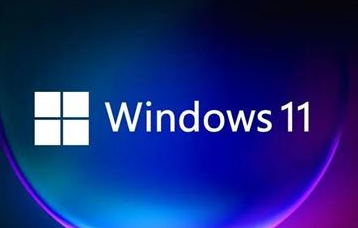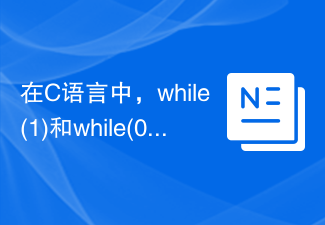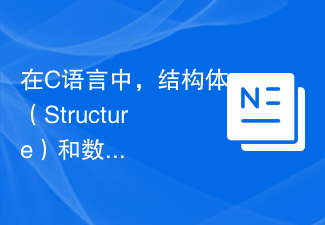When you first learn Java, you may often encounter the following code:
1 String str1 = new String("hello");
2 String str2 = new String("hello");
3
4 System.out.println(str1==str2);
5 System.out.println (str1.equals(str2));
Why are the output results of lines 4 and 5 different? What is the difference between == and equals methods? If you don't figure this out when you first learn Java, you will make some low-level errors when writing code in the future. Today let’s learn about the difference between == and equals methods.
1. What exactly does the relational operator "==" compare?
The following sentence is taken from the original words in the book "Java Programming Thoughts":
"Relationship Operators produce a boolean result, and they compute a relationship between the values of their operands."
This sentence seems simple, but it still needs to be understood carefully. To put it simply, == is used to compare whether values are equal. Let’s look at a few examples:
public class Main {
/**
* @param args
*/
public static void main(String[] args) {
// TODO Auto-generated method stub
int n=3;
int m=3;
System.out.println(n==m);
String str = new String("hello" );
String str1 = new String("hello");
String str2 = new String("hello");
System. out.println(str1==str2);
str1 = str;
str2 = str;
System.out.println(str1= =str2);
}
}
The output result is true false true
n==m The result is true. This is easy to understand. The values stored in variable n and variable m are both 3, which must be equal. And why are the results of the two comparisons of str1 and str2 different? To understand this, you only need to understand the difference between basic data type variables and non-basic data type variables.
There are 8 basic data types in Java:
-
Floating point type: float (4 byte), double(8 byte)
-
Integer type: byte(1 byte), short(2 byte), int (4 byte) , long(8 byte)
-
Character type: char(2 byte)
Boolean: boolean (The JVM specification does not clearly stipulate the size of the space it occupies, but only stipulates that it can only take the literal values "true" and "false")
For variables of these 8 basic data types, the variables directly store "value", so when comparing using the relational operator ==, compare is the "value" itself. It should be noted that floating point and integer types are both signed types, while char is an unsigned type (the value range of the char type is 0~2^16-1).
That is to say, for example:
int n=3;
int m=3;
Variable n and variable m both directly store the value "3", so when compared with ==, the result is true.
For variables of non-basic data types, they are called reference type variables in some books. For example, str1 above is a reference type variable. A reference type variable stores not the "value" itself, but the address of its associated object in memory. For example, the following line of code:
String str1;
This sentence declares a reference type variable, It is not associated with any object at this time.
Use new String("hello") to generate an object (also called an instance of the String class) and bind this object to str1:
str1= new String("hello");
Then str1 points to an object (str1 is also called in many places Object reference), at this time, the variable str1 stores the storage address of the object it points to in the memory, not the "value" itself, that is to say, it is not the directly stored string "hello". The references here are very similar to pointers in C/C++.
So when you use == to compare str1 and str2 for the first time, the result is false. Therefore, they point to different objects respectively, which means that the memory addresses where they are actually stored are different.
In the second comparison, both str1 and str2 point to the object pointed to by str, so the result is undoubtedly true.
2. What does equals compare?
The equals method is a method in the base class Object, so all classes that inherit from Object will have this method. In order to understand the role of the equals method more intuitively, let's look directly at the implementation of the equals method in the Object class.
The source code path of this class is: Object.java under the java.lang path of src.zip in C:\Program Files\Java\jdk1.6.0_14 (depending on personal jdk installation depending on the path).
The following is the implementation of the equals method in the Object class:

Very Obviously, in the Object class, the equals method is used to compare whether the references of two objects are equal, that is, whether they point to the same object.
But some friends may have questions again, why is the output result of the following code true?
public class Main {
/**
* @param args
*/
public static void main( String[] args) {
// TODO Auto-generated method stub
String str1 = new String("hello");
String str2 = new String("hello");
System.out.println(str1.equals(str2));
}
}
To know the truth, you can look at the specific implementation of the equals method of the String class. Also under this path, String.java is the implementation of the String class.
The following is the specific implementation of the equals method in the String class:

It can be seen that the String class overrides the equals method to compare whether the strings stored in the pointed string objects are equal.
Some other classes, such as Double, Date, Integer, etc., have rewritten the equals method to compare whether the contents stored in the pointed objects are equal.
In summary:
1) For ==, if it acts on a variable of a basic data type, its stored " Value" are equal;
If it is applied to a reference type variable, the comparison is the address of the object pointed to
2) For equals method, note: the equals method cannot act on variables of basic data types
If the equals method is not overridden, the address of the object pointed to by the reference type variable is compared. ;
If classes such as String and Date override the equals method, the contents of the pointed objects will be compared.
The above is the detailed content of A brief discussion on the difference between equals and ==. For more information, please follow other related articles on the PHP Chinese website!
 区分win11商务版和消费者版的区别Jan 05, 2024 pm 04:53 PM
区分win11商务版和消费者版的区别Jan 05, 2024 pm 04:53 PMwin11business和consumer版本其实就是消费版还有商业版,两者的区别不大,但还是有的,下面我们就一起来看一下两者的具体区别在哪里。win11business和consumer版本区别:1、两者如果版本相同的话,跟专业版没什么区别。2、两者的功能基本相同,不过微软的授权方式是不同的。3、激活的方式也是不同的,consumer是单一授权,而business是批量授权。4、我们下载consumer就可以了。
 华为GT3 Pro和GT4的差异是什么?Dec 29, 2023 pm 02:27 PM
华为GT3 Pro和GT4的差异是什么?Dec 29, 2023 pm 02:27 PM许多用户在选择智能手表的时候都会选择的华为的品牌,其中华为GT3pro和GT4都是非常热门的选择,不少用户都很好奇华为GT3pro和GT4有什么区别,下面就就给大家介绍一下二者。华为GT3pro和GT4有什么区别一、外观GT4:46mm和41mm,材质是玻璃表镜+不锈钢机身+高分纤维后壳。GT3pro:46.6mm和42.9mm,材质是蓝宝石玻璃表镜+钛金属机身/陶瓷机身+陶瓷后壳二、健康GT4:采用最新的华为Truseen5.5+算法,结果会更加的精准。GT3pro:多了ECG心电图和血管及安
 在C语言中,while(1)和while(0)之间的区别是什么?Aug 31, 2023 am 10:45 AM
在C语言中,while(1)和while(0)之间的区别是什么?Aug 31, 2023 am 10:45 AM我们知道在C语言中,'while'关键字用于定义一个循环,该循环根据传递给循环的条件来工作。现在,由于条件可以有两个值,即真或假,所以如果条件为真,则while块内的代码将被重复执行,如果条件为假,则代码将不会被执行。现在,通过将参数传递给while循环,我们可以区分while(1)和while(0),因为while(1)是一个条件始终被视为真的循环,因此块内的代码将开始重复执行。此外,我们可以说明,传递给循环并使条件为真的不是1,而是如果任何非零整数传递给while循环,则它将被视为真条件,因
 win10逻辑分区和主分区的区别Jan 03, 2024 pm 04:17 PM
win10逻辑分区和主分区的区别Jan 03, 2024 pm 04:17 PM最近不少小伙伴问小编,win10逻辑分区和主分区的区别是什么,我们大多数电脑,其实都是分为了一个C盘主分区,然后其他的D盘、E盘和F盘等都属于逻辑分区,一般情况下是→然后再建→在扩展分区里面,再创建。下面小编整理了详细的教程,一起来看看吧。win10逻辑分区和主分区区别的详细介绍主分区、扩展分区和逻辑分区的区别简单来说,我们大多数电脑,都是分为了一个C盘主分区,然后其他的D盘、E盘和F盘等都属于逻辑分区,将D盘、E盘、F盘等出了主分区之外的磁盘组合,则就属于一个扩展分区。对于硬盘主分区、扩展分区
 win32和win64有什么区别May 29, 2023 pm 05:22 PM
win32和win64有什么区别May 29, 2023 pm 05:22 PMwin32和win64的区别是:1、win32是指Microsoft Windows操作系统的32位环境,win64是指Microsoft Windows操作系统的64位版本,比32位版本更加稳定快速;2、win32最高支持2G的内存,win64必须是4G以上内存;3、win64支持基于64位的处理器,而win32却不能完全支持;4、win32追求简洁,win64追求性能。
 在C语言中,结构体(Structure)和数组(Array)之间的区别是什么?Aug 30, 2023 pm 09:37 PM
在C语言中,结构体(Structure)和数组(Array)之间的区别是什么?Aug 30, 2023 pm 09:37 PM在C中,结构体和数组都用作数据类型的容器,即在结构体和数组中我们都可以存储数据,也可以对它们执行不同的操作。基于内部实现,以下是两者之间存在一些基本差异。Sr.编号键结构数组1定义结构体可以定义为一种数据结构,用作容器,可以容纳不同类型的变量。另一方面,数组是一种用作容器的数据结构,可以容纳相同类型的变量,但不支持多种数据类型变量。2内存分配输入数据的内存分配结构不必位于连续的内存位置。而在数组的情况下,输入数据存储在连续的内存分配中,这意味着数组将数据存储在分配连续内存块的内存模型中(即,具有
 JavaScript和PHP的cookie之间有哪些区别?Sep 02, 2023 pm 12:29 PM
JavaScript和PHP的cookie之间有哪些区别?Sep 02, 2023 pm 12:29 PMJavaScriptCookie使用JavaScriptcookie是记住和跟踪偏好、购买、佣金和其他信息的最有效方法。更好的访问者体验或网站统计所需的信息。PHPCookieCookie是存储在客户端计算机上的文本文件并保留它们用于跟踪目的。PHP透明地支持HTTPcookie。JavaScriptcookie如何工作?您的服务器将一些数据发送到访问者的浏览器cookie的形式。浏览器可以接受cookie。如果存在,它将作为纯文本记录存储在访问者的硬盘上。现在,当访问者到达站点上的另一个页面时
 Vue3和Vue2的区别:更丰富的生命周期钩子Jul 08, 2023 pm 05:19 PM
Vue3和Vue2的区别:更丰富的生命周期钩子Jul 08, 2023 pm 05:19 PMVue3和Vue2的区别:更丰富的生命周期钩子Vue是一种流行的JavaScript框架,用于构建交互式的Web应用程序。Vue2是Vue.js的稳定版本,而Vue3是Vue.js的最新版本。Vue3带来了许多改进,其中之一是更丰富的生命周期钩子。本文将介绍Vue3和Vue2生命周期钩子的区别,并通过代码示例进行演示。Vue2的生命周期钩子在Vue2中,我们


Hot AI Tools

Undresser.AI Undress
AI-powered app for creating realistic nude photos

AI Clothes Remover
Online AI tool for removing clothes from photos.

Undress AI Tool
Undress images for free

Clothoff.io
AI clothes remover

AI Hentai Generator
Generate AI Hentai for free.

Hot Article

Hot Tools

SublimeText3 English version
Recommended: Win version, supports code prompts!

SAP NetWeaver Server Adapter for Eclipse
Integrate Eclipse with SAP NetWeaver application server.

WebStorm Mac version
Useful JavaScript development tools

SublimeText3 Linux new version
SublimeText3 Linux latest version

MinGW - Minimalist GNU for Windows
This project is in the process of being migrated to osdn.net/projects/mingw, you can continue to follow us there. MinGW: A native Windows port of the GNU Compiler Collection (GCC), freely distributable import libraries and header files for building native Windows applications; includes extensions to the MSVC runtime to support C99 functionality. All MinGW software can run on 64-bit Windows platforms.






